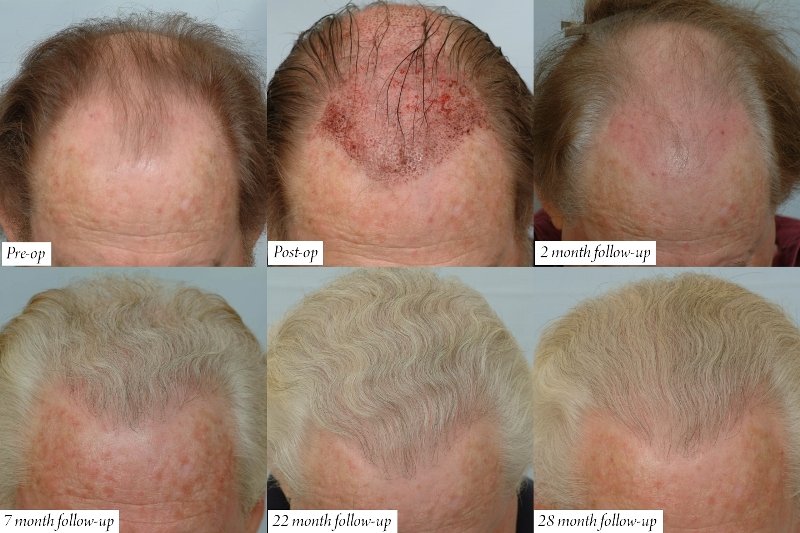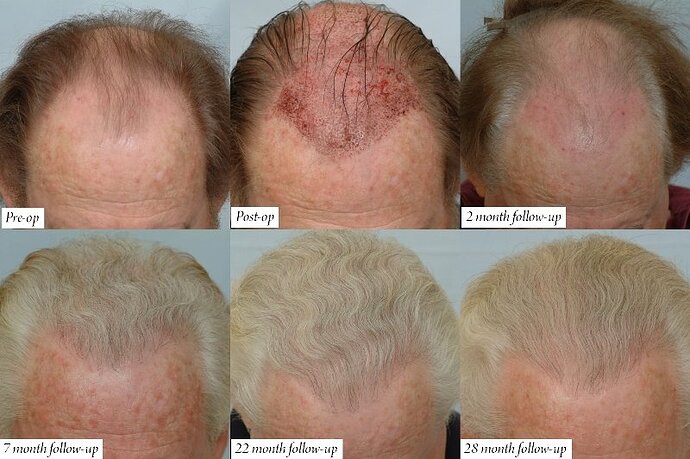» What about post op care? Can you post Dr. Cole’s post op care
» instructions?
Hi Craig,
Listed below are our post-op instructions. 
POST OPERATIVE INSTRUCTIONS:
After surgery, the transplanted area will be cleaned of blood and crust as best as we can. Don’t touch the scalp until the next day. Wait about 18 hours before resuming any care. You can take a shower (body and donor area only), without wetting the Recipient area. Just be careful because movement could increase the blood flow into your scalp, and also increase the risk of popping the grafts out. You can take a bath but do not submerge the head. Avoid Bleeding and high pressure on your head because it could dislodge grafts!!
What could increase my scalp Pressure?
- Sexual Activity. Stay away for three days.
- Lifting heavy Items. Do not lift for 1 week (for CIT)
- You may do a light workout in 3 days for CIT.
- Don’t bump your head. (car doors, shelves….)
- Don’t bend over to pick up an item on the ground for one week.
- Don’t hit your recipient area with direct shower pressure for two weeks.
What could increase the bleeding?
- MEDICATION:- Aspirin, NSAID (Ibuprofen, Motrin, Advil), and Vitamins in general. Stay off for 5 days.
- ALCOHOL: Avoid.
- CAFFEINE: (Coffee, Coke Tea) tendency to increase blood pressure, therefore increases bleeding. Decrease the quantity you drink.
Some outside factors could impair the growth of your grafts.
(a) Direct sunshine exposure for a long period of time. Avoid outdoor activities, or wear a hat and use a strong sunscreen. Avoid sun exposure for 3-6 months.
(b) Smoking. Decrease as much as you can.
(c) Swimming pools because of the chlorine. Avoid pools for 2 weeks.
IN SUMMARY JUST TAKE IT EASY FOR ONE WEEK.
CARING FOR THE RECIPIENT AND DONOR AREAS
It’s mandatory to wash your hair at least once a day. We also encourage our patients to keep their recipient area moist, (or wet) to decrease the itching and speed up the healing process.
Our surgical kit has a special product that you can spray every hour for the following three days, post-op and then you can space that until the product is finished. One week is enough.
We have an alternative for those who don’t use the surgical kit.
RECIPIENT AREA:- CIT
18 Hours after your procedure should be the best time to start washing your hair. You can use a regular non medicated Shampoo (baby shampoo is best) or use the one we recommend formulated specifically for hair transplant patients by www.HairCycle.com
Procedure:
-
Wet your hair gently.
-
Lather the shampoo in your hand and make it soapy.
-
Apply the shampoo over your head. Just dab it up and down, do not scrub.
-
Rinse it by pouring gently water with a cup. (Some people block with their hand the shower pressure and let the liquid flow gently on to the scalp)
-
Dry your hair using a bath cloth (just Dab it) or hair dryer, turned on cool setting.
-
Use a normal saline solution or mixed in a gallon of distilled water, nine tablespoon of regular salt and spray that on your head.
This is for the first week.
Repeat the same events the second week. But you can start massaging your scalp with fingertips while applying the shampoo. It helps the scabs to fall off. After the second week you can go back to regular shower and we recommend you rub the scalp aggressively to remove the remaining scabs.
DONOR AREA:
Be aggressive the next day after the procedure. Rub the area with the shampoo and hit with a good shower pressure to rinse it. After drying the area, apply a layer of Bacitracin or Neosporin for two to three days.
In strip case, we have (absorbable or dissolvable) sutures that will fall off on their own around 3 to 4 weeks post-op.
You or we can still remove them after 12 days if it’s bothering you.
WHAT TO EXPECT IN POST-OP
DONOR AREA
Day 1: You may have some oozing and pain.
Just apply pressure with a bath cloth for 15 minutes.
FOR PAIN: We have prescribed Vicodin (pain killer) and you can apply an ice bag – 20 minutes on / 20 minutes off.
Day 3 Post-op You may have some swelling in the forehead and eyes.
To avoid that, start taking an anti-swelling medication. (Prednisone for 5 days starting day 1, post-op)
Sleep in 45 degree angle or your head elevated (it helps the liquid drain backward) if you are able to. If not, do not worry about it.
If you do swell, apply ice pack in the front. (15 min. on. - 30 min. off)
Your scabs will turn brown w/ crust on it.
Day 7 Post. The scabs will start to fall off, and this will occur during two weeks. The scalps usually turn red, due to the inflammation and blood activity. It can last one month or more in some patients.
3 Months Post-op. The first Growth.
8 Months Post-op. Good time to schedule a follow up consultation to assess the growth. (80% of your hair should be growing)
9 Months to 1 year Post-op: Full benefits of your surgery in term of cosmetic and growth.
MEDICATIONS:
(a) Pain Medication.
Vicodin .5mg. 2 Pills by mouth as needed. Start just after the procedure.
Side effect, Drowsiness, Dizziness.
Don’t do anything that will require you to be alert. Driving, manipulating sharp instruments.
(b) Tylenol extra strength 2 Pills, 3 times a day. For minor pain as in CIT.
(c) Sleeping medication. Ambien 10 mg. As needed.
(d) Anti swelling Medical. Prednisone. Decreasing dosage for 5 days. (20mg, 15mg, 10mg, 5mg and 5 mg). Take it with food. (upsets your stomach)
(e) Rogaine: Vitamins for hair. Wait three days before you restart your treatment.
NB: Any medications that you take which are not vital or necessary stop them prior to your procedure and restart those 3 to 5 days after the procedure.
***You may have your first haircut or color/dye your hair 14 days after your procedure. Do not shave your head with a razor for at least one month.

